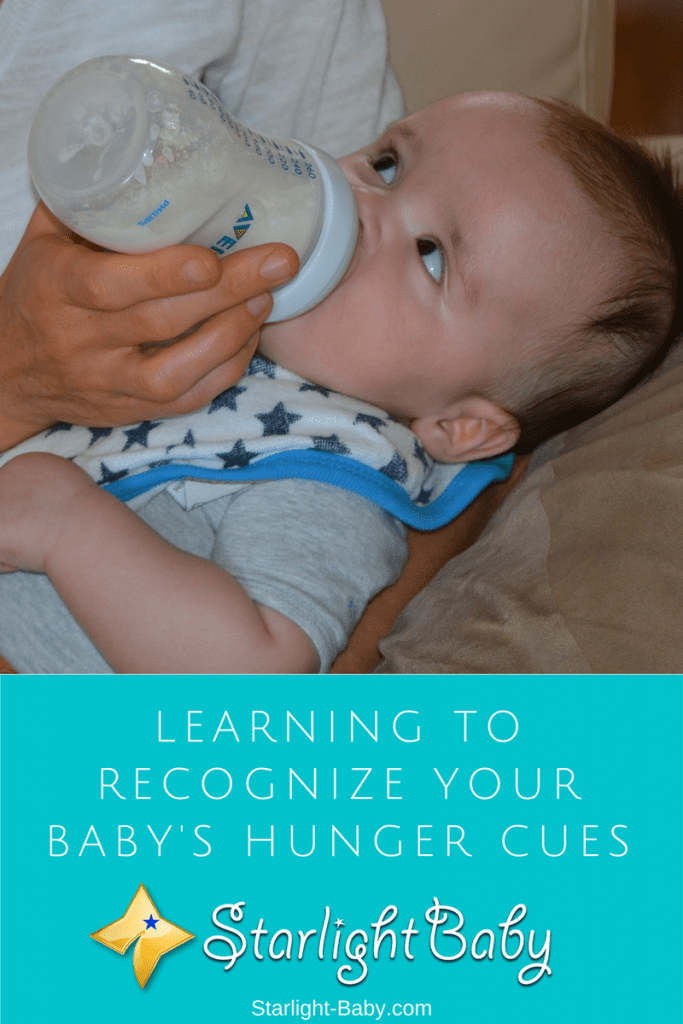 Learning to recognize your baby’s cues can make life a lot easier during the first few months. It’s not always easy to tell why your baby is crying when you’re a first-time parent. However, did you know there are different types of cries your baby does to let you know what they need? There are also a number of other cues you can look out for to quickly identify the issue.
Learning to recognize your baby’s cues can make life a lot easier during the first few months. It’s not always easy to tell why your baby is crying when you’re a first-time parent. However, did you know there are different types of cries your baby does to let you know what they need? There are also a number of other cues you can look out for to quickly identify the issue.
One of the first types of cues you’re going to want to familiarize yourself with is hunger. Ensuring your little one is content and well-fed is obviously one of your main priorities. By watching and listening out for the various cues, you’ll soon learn exactly when it’s time for a feed – something that’s going to prove invaluable if you’re following a baby-led routine.
Here we’ll look at the most common hunger cues babies use. It’s important to note that all babies are different. Therefore, not all the cues listed below will apply to your little one. However, you should be able to notice at least one or two of them.
Recognizing Early Hunger Cues
 Crying is often seen as the main cue your little one is hungry. However, it’s actually usually the last cue your baby will give you. There are quite a few things your little one will try before resorting to crying, so it’s worth familiarizing yourself with the most common early hunger cues.
Crying is often seen as the main cue your little one is hungry. However, it’s actually usually the last cue your baby will give you. There are quite a few things your little one will try before resorting to crying, so it’s worth familiarizing yourself with the most common early hunger cues.
You may notice your baby doing one, or all of the following:
- Starting to stir/make a fuss
- Constantly opening and closing their mouth
- Sucking anything they can including lips, hands, toys and clothes
- Making a squeaking noise
- Becoming extra-alert
Of course, some of the signs above could be a cue for other needs. If they are stirring more and making a fuss, it could be that their diaper needs changing or they may be sleepy. So, you’ll need to look out for more of the early cues to establish whether it’s a sign of hunger.
The sucking on hands cue can be a little misleading. Once your baby reaches the age of 6-8 weeks, they begin to have a lot more hand control. This means they start to learn they can put their hand in their mouth and they begin to do it out of curiosity and because they like the way it feels. Babies also frequently suck on their hands during teething, so that’s definitely something to be aware of.
It’s also worth noting that the early cues can easily be mistaken for active sleep. So, it may be worth holding on a little to see whether your little one progresses onto the more active cues.
Active Cues To Watch Out For
 If the early hunger cues aren’t picked up, your little one will start to become a little more active to highlight their needs. These signs aren’t as subtle so you should be able to recognize them a little easier!
If the early hunger cues aren’t picked up, your little one will start to become a little more active to highlight their needs. These signs aren’t as subtle so you should be able to recognize them a little easier!
Common active cues include:
- Squirming and fidgeting a lot
- Fast breathing
- Attempting to pull at your clothing
- Trying to move themselves into the feeding position
- Hitting your chest or arm
A lot of these clues do involve the baby highlighting your chest area. So, they tend to be more noticeable when you’re carrying or holding them. If they are laying in their crib, watch out for overly-active behavior.
Resorting To Late Cues
 If the early and active cues aren’t picked up on, baby will resort to the late hunger cues. These are pretty difficult to miss and include:
If the early and active cues aren’t picked up on, baby will resort to the late hunger cues. These are pretty difficult to miss and include:
- Frantically moving their head from side to side
- Turning red
- Crying
It may take time to start recognizing the earlier signs, but you’ll easily pick up on the problem once it reaches the late cues stage. One thing to keep in mind here is that once your baby’s hunger does reach the late cues stage, you’re going to need to calm them down a little before you do feed them. So, comfort them a little and then offer the breast/bottle.
Still Can’t Tell If Your Baby Is Hungry?
It may look easy from the signs above, but recognizing your little one’s hunger cues can take a long time. If you’re still unsure whether or not your baby is hungry, offer to feed them. It’s not going to do any harm and at least you’ll know for sure.
Overall, it helps to monitor your baby throughout the day and pay attention to any behaviors they present. Pay particular attention when you know they’re likely to get hungry as that’s when you’ll find it easier to identify your baby’s individual cues.
You are right learning this will make our life much easier, but I think this is very difficult to do. Some of your clues are easy to notice and guess what is wrong but when the baby is crying there are many reasons to do so.
All we can do is to eliminate ….. and try to change the baby diaper and if he still cries we can try to feed him, or putting him to sleep.
All these remembers me how hard are the first 1-6 months.
Yes, wallet, the cues could mean a lot of different things so it could become quite confusing. But your ways of trying to sooth the baby and eliminating the possible causes of his irritation or cries are good steps. If these still doesn’t work, it’s likely he’s just hungry and needs to be fed.
Based on my experience, I can say it is easy to identify your baby’s hunger. All you have to do is watch your baby showing following signs
The baby is irritated
The baby does not stay still
The baby fidgets a lot
The baby begins to chew clothes
The baby begins to suck a thumb or chew fingers
The baby cries
I agree with everything you’ve said, vinaya. Those cues are also true so parents or people in charge of child care should be observant in order to detect if baby is hungry.